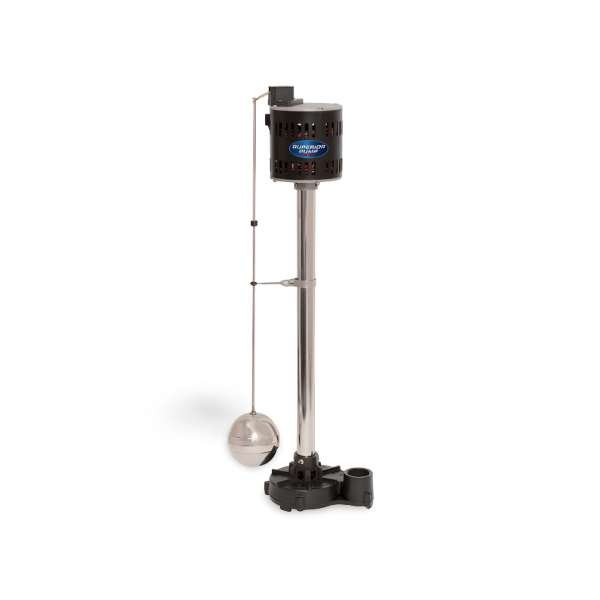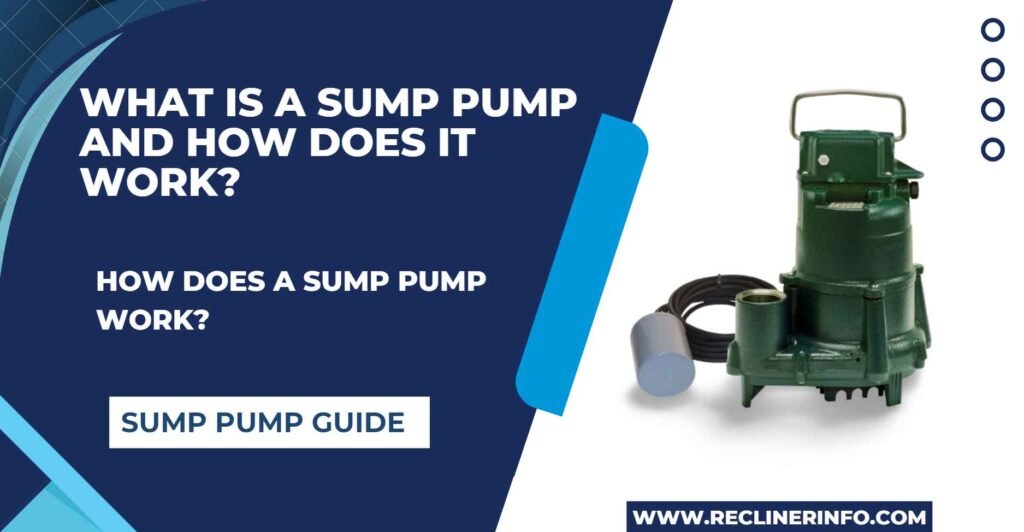If you are a homeowner or have spent time in a basement, you may have encountered a sump pump. A sump pump is a crucial component of many homes, but most people need to learn its mechanism. This blog post will explore “what is a sump pump and how does it work.” We will also explain its types, components, and purpose of use.
Contents
- 1 What is a Sump Pump?
- 2 How Does a Sump Pump Work?
- 3 Types of Sump Pumps:
- 4 What Does a Sump Pump Look Like? Components of Sump Pump
- 5 Frequently Asked Questions:
- 6 Final Thoughts:
- 7 Author
What is a Sump Pump?
A sump pump is a mechanical device designed to remove excess water from the lower part of a basement or a crawlspace. It protects the basement and underground parts of a building against water damage.
Its efficient operation involves several components, including the impeller, which creates a centrifugal force to pump out excess water. The sump pump’s primary goal is to reduce the risk of flooding and protect the Foundation’s structural integrity, especially during heavy rains, melting snow, or plumbing leaks.
Also check the battery back up system of a Sump Pump here.
Why is it Called a Sump Pump?
The term “sump pump” originates from its primary purpose and function. The word “sump” refers to a pit or reservoir that collects and holds liquid in a lower part of a space. In the context of a sump pump, the “sump” refers explicitly to a sump pit – a specific hole in the basement or crawlspace of a building.
How Does a Sump Pump Work?
The mechanism of the sump pump is easy and can be understood by the following steps.
1. Water Collection in Sump Pit:
When water accumulates in the sump pit through natural groundwater seepage or via a drainage system around the Foundation, a pressure sensor activates once the water level reaches a specific point.
2. Activation of Electric Motor:
The float or pressure sensor activates an electric motor connected to the sump pump. In submersible sump pumps, the motor is sealed to prevent water from reaching its electrical components.
3. Pumping Action:
As the motor activates, the impeller (a fan-like blade) starts to spin rapidly, generating a centrifugal force. This force drives the water towards the sides of the pump, creating a low-pressure area at the center.
4. Discharge of Water:
Water is drawn through the pump’s intake and forced out through a pipe connected to the pump’s outlet. This pipe directs the water away from the house’s Foundation and usually discharges it at a safe distance from your property.
5. Deactivation of Sump Pump:
Once the water level in the sump pit decreases to a certain level, the float or pressure sensor returns to its initial position, turning off the sump pump until it’s needed again.
Types of Sump Pumps:
There are two main types of sump pumps;
a. Submersible Sump Pumps:
Submersible sump pumps are installed within the sump pit and are designed to operate underwater. They are more distinct and less noisy than pedestal sump pumps, making them a popular choice for residential use.

b. Pedestal Sump Pumps:
Pedestal sump pumps have the motor set up above the sump pit for motor safety. The impeller and pump are located inside the water. These pumps are generally less expensive than submersible sump pumps but are noisier and more visible.

What Does a Sump Pump Look Like? Components of Sump Pump
Motor Housing:
The motor housing is the main body of the sump pump. It houses the electric motor that improves the pump’s operation. The motor is usually sealed to prevent water from entering and damaging the electrical components.
Float Switch or Pressure Sensor:
The float switch or pressure sensor is a crucial component that activates the sump pump when the water level in the sump pit rises to a certain point. It is often located on the side of the motor housing.
Impeller:
The impeller is a fan-like blade connected to the motor. When the sump pump is activated, the impeller spins rapidly, creating a centrifugal force that moves water toward the pump’s outlet.
Intake and Outlet Ports:
The intake port draws water into the pump from the sump pit. The outlet port is where the pumped water is discharged from the pump and directed away from the basement.
Sump Pit Cover:
Some sump pumps may come with a sump pit cover or lid. The cover helps to keep waste out of the sump pit and prevents odors.
Extension Cord:
The sump pump is typically connected to a power source through an extension cord, allowing it to be powered when needed.
Materials and Colors:
Sump pumps are commonly made of durable materials such as plastic, cast iron, or stainless steel. They usually come in neutral colors like black, gray, or green.
Size and Design:
The design of sump pumps is compact and space-efficient. Their size can vary, but they are generally small and fit comfortably in the sump pit.
What is the Purpose of a Sump Pump?
Sump pumps prevent massive water damage to your home and buildings. The purpose of sump pumps is mentioned below.
1. Flood Prevention:
Sump pumps keep your basement or crawlspace dry during heavy rainfall or when water levels rise due to other factors, preventing flood damage and mold growth.
2. Protecting Foundation:
By diverting water away from the Foundation, sump pumps help maintain the structure of your home and prevent foundational issues caused by water seepage.
3. Preserving property:
Water can damage furniture, electronics, and personal belongings stored in the basement. A sump pump safeguards these items from water.
4. Reducing Insurance Costs:
Homes equipped with sump pumps are generally considered to lower risks for water damage. Installing a sump pump can reduce insurance premiums, potentially saving homeowners money in the long run.
Frequently Asked Questions:
Can a Sump Pump Run Continuously?
A sump pump can run continuously for up to 24 hours if the water level exceeds and threatens your home or building. The heavy rainfall can compel the sump pump motor to run continuously, and when the level decreases, it automatically turns off.
How often should a Sump Pump be replaced?
The replacement of the sump pump depends on the quality and sound installation. If you have a cheap sump pump, you will replace it within two years, but it will work for 7 to 10 years if you have a high-quality sump pump.
Is a Sump Pump Necessary?
Yes, a sump pump is essential in certain situations. If you live in an area with heavy rainfall or have experienced basement flooding, a sump pump is crucial to prevent water damage and protect your property. It maintains a dry environment, preserves the Foundation, and prevents mold growth.
Final Thoughts:
Investing in the sump pump is crucial for homeowners because it protects your property from water-related disasters. It also keeps your basements and crawl spaces dry in heavy rainfall. Understanding “what is a sump pump and how it works” helps you to make informed decisions about investing in a sump pump.
Now you better understand the importance of a sump for your home or building. This can make your home dry and safe from floods. So, if you are ready to buy one for your home, you can check the latest sump pumps on our website. Yeah! If you have any problem related to sump pumps, you can ask in the comment section. Thank you for spending time with us.

